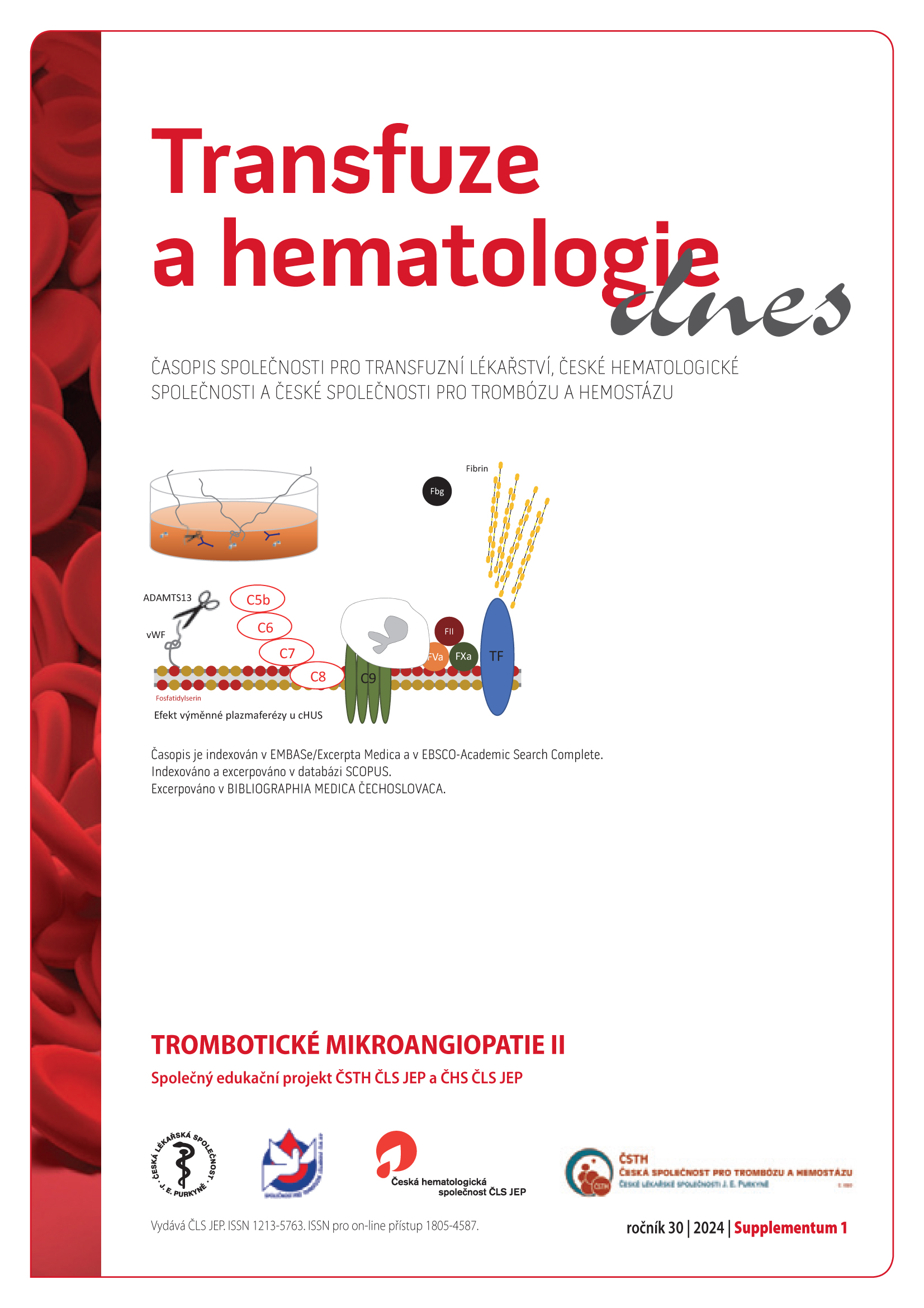Therapeutic Plasma Exchange in the Treatment of Thrombotic Microangiopathies
Abstract
Therapeutic plasma exchange (TPE) has an irreplaceable place in the treatment of some types of thrombotic microangiopathies, In the treatment of TTP, it has become the standard of care. TPE is defined by the American Society For Apheresis (ASFA) as a therapeutic extracorporeal procedure in which the patient's plasma is separated from other blood components. Although it is an invasive technique requiring a high quality of venous access, on the other hand, TPE is highly safe, and when performed correctly, complications are rare. It can be started within tens of minutes if necessary, and it has essentially no real contraindications. Separation of plasma from other blood components is ensured by centrifugation or membrane filtration. Crystaloids, 5 % albumin solution and freshly frozen donor plasma are used as a replacement solution in various proportions and combinations, or more recently, solvent-detergent-treated plasma is increasingly used. At least total plasma volume (TPV) of the patient should be replaced in one procedure, with less than 70 % of the TPV being replaced. It is important to remember to collect blood samples for ADAMTS13 and other tests, or preserve plasma samples, before starting TPE treatment, as interpretation of results from samples collected after TPE may be erroneous. The efficacy of TPE is determined by two mechanisms: 1) removal of the disease mediator or plasma components contributing to the pathogenesis of the condition, 2) delivery of the missing or dysfunctional plasma component when plasma is used as a replacement solution. The efficacy of TPE varies between forms of thrombotic microangiopathies, ranging from a clear and prompt effect in TTP to no effect in some forms of atypical haemolytic uraemic syndrome.


